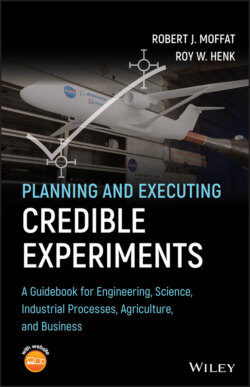Читать книгу Planning and Executing Credible Experiments - Robert J. Moffat - Страница 46
Observations of a Popular Theoretical Physics Field
ОглавлениеIn the early 1980s, String Theory became a popular physics field. Our particular interest for this text is twofold: (i) its fashionability invites comparison with Ioannidis corollaries 5 and 6; (ii) Ioannidis evaluated medical research based on falsifiable predictions, called “PPV,” as discussed in Panel 2.1.
During the peak years of String Theory popularity, its math techniques flourished. It garnered the majority of physics funding; its proponents placed the majority of professorships. We avidly read about it.
Since String Theory is one of several competing theories, and outside our specialty, we continue to watch with interest all sides in the dispute.
String Theory notably depended on multiple spatial dimensions. E.A. Abbott's book Flatland: A Romance of Many Dimensions had already introduced us to imagining extra spatial dimensions. E. Witten was a top advocate of String Theory. A principal concern, stated by advocates and critics alike, was that String Theory lacked predictions that could be tested experimentally.
Beginning in 2006, the warnings in Ioannidis corollaries 5 and 6 compared with String Theory. Theoretical physicist L. Smolin raised an alert in his book The Trouble with Physics: The Rise of String Theory, the Fall of a Science and What Comes Next (2006). Noting that physics was rich in alternative “promising new directions,” Smolin wrote to promote other areas of theoretical and experimental physics. Others noticed as well. P. Woit wrote his critique Not Even Wrong: The Failure of String Theory and the Continuing Challenge to Unify the Laws of Physics (2006).
Roger Penrose6 took on three popular areas of physics, expressing similar concerns. Penrose's recent book (2016) is Fashion, Faith, and Fantasy in the New Physics of the Universe. The chapter entitled “Fashion” covers String Theory, adding his perspective. The chapter covering quantum mechanics is entitled “Faith.” Techniques of quantum electrodynamics show success, the evidence being experimental validation to accuracies rivaling relativity. Penrose added an experimental test of macro‐quantum superposition. The chapter entitled “Fantasy” deals with cosmologies beyond the big bang. Penrose highlighted “The Phenomenal Precision in the Big Bang”; of particular interest to us in thermo‐fluids was the necessarily low entropy.
Regardless of a theory's popularity, political or otherwise, we urge experimental tests.
Sometimes an experiment planned for another purpose provides the answer. A prime example was the search for residual thermal evidence of the big bang. While a Princeton physics group was proposing to test the theory, a couple of astronomers at AT&T Bell Labs, Arno Penzias and Robert Wilson, were trying to eliminate noise which was contaminating the signal in their antenna. They even removed pigeon and bat residue. Failing to eliminate the noise, they spoke with Princeton professor Robert Dicke. They published “A Measurement of Excess Antenna Temperature at 4080 Mc/s” in the Astrophysical Journal (Penzias and Wilson 1965). In 1978, Penzias and Wilson won the Nobel Prize.
